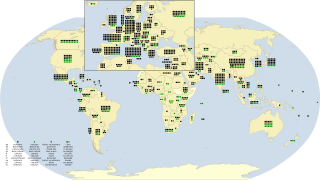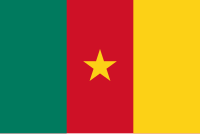
Dja Faunal Reserve, located in southeastern Cameroon, is a UNESCO World Heritage Site inscribed in 1987. Causes of inscription include diversity of species present in the park, the presence of five threatened species of mammal, and lack of disturbance within the park. It is managed by Dja Conservation Services (DCS), which is led by a conservator. The Reserve receives significant support for its management from many projects funded by international partners and supporters of conservation in Cameroon.

As of September 2023, there are a total of 1,199 World Heritage Sites located across 168 countries, of which 933 are cultural, 227 are natural, and 39 are mixed properties. The countries have been divided by the World Heritage Committee into five geographic zones: Africa, Arab States, Asia and the Pacific, Europe and North America, and Latin America and the Caribbean. With 59 selected areas, Italy is the country with the most sites; followed by China with 57, then France and Germany with 52 each.

The Dja River is a stream in west-central Africa. It forms part of Cameroon–Republic of Congo border and has a course of roughly 720 kilometres (450 mi).

Lobéké National Park is a national park of southeastern Cameroon within the Moloundou Arrondissement of East Province. Located in the Congo Basin, it is bounded on the east by the Sangha River which serves as Cameroon's international border with Central African Republic and the Republic of the Congo. It is adjacent to two other reserves in the CAR and Congo. To the northwest is Boumba Bek National Park, another national park in Cameroon's East Province.
The Dzanga-Ndoki National Park is located in the southwestern extremity of the Central African Republic. Established in 1990, the national park is 1,143.26 square kilometres (441.42 sq mi). The national park is split into two non-continuous sectors, the northern Dzanga sector 49,500 ha and the southern Ndoki sector 72,500 ha. Notable in the Dzanga sector is a gorilla density of 1.6/km2 (4.1/sq mi), one of the highest densities ever reported for the western lowland gorilla.

Sangha Trinational is a forest divided between the nations of Central African Republic, Cameroon and Congo-Brazzaville. It was added as a UNESCO World Heritage Site in 2012 because of its outstanding biodiversity and unique biological communities. The site includes 3 contiguous national parks within the humid tropical forests of Central Africa: Nouabalé-Ndoki National Park in Congo, Lobéké National Park in Cameroon, and Dzanga-Ndoki National Park in Central African Republic. The large size of the site and the relatively limited amount of deforestation within the three parks has allowed populations of vulnerable species such as African forest elephants, gorillas, sitatunga, and chimpanzees to thrive. In addition, populations of critically endangered plant species such as Mukulungu are protected within the site's borders.























